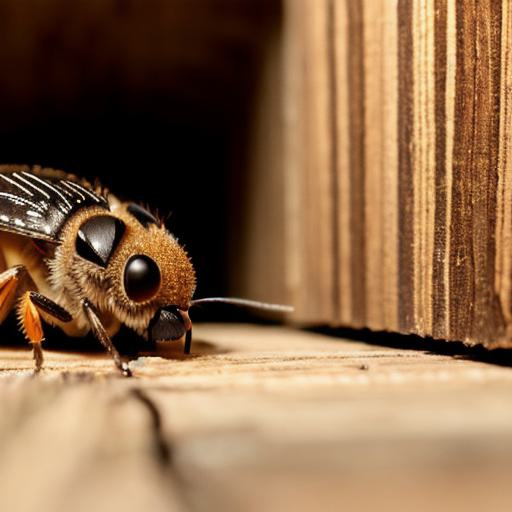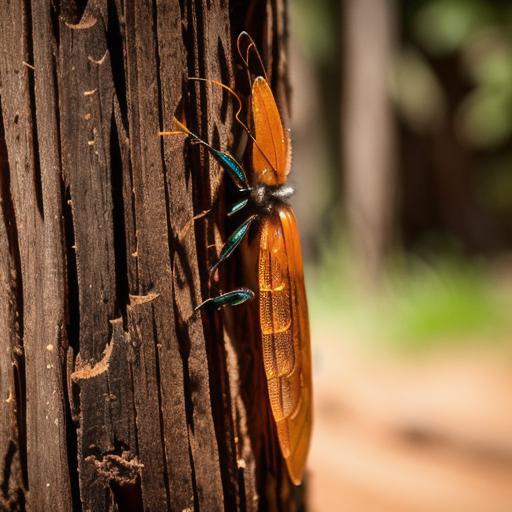Discovering termite holes in your beloved wooden furniture or construction elements can be a distressing experience for any homeowner. In this article, we will guide you through the process of identifying and treating these destructive pests, providing practical tips and real-life examples to help you effectively manage termite infestations.
-
What are Termites?
Termites are social insects that play a crucial role in nature by breaking down cellulose materials such as wood. They live in colonies, with each colony consisting of several thousand members, and they work together relentlessly to consume and digest the wood, creating complex subterranean tunnels. While termites perform an essential ecological function, they can cause extensive damage when they invade homes or structures. -
Signs of Termite Damage
Termite infestations may not always be obvious, but there are several telltale signs that you should look out for:Visible Holes: As termites consume the wood from the inside out, the exterior may develop small holes or cracks as the structure weakens. These openings can vary in size and may be difficult to detect, especially in their early stages.
Hollow Sound: Tapping on suspected wooden areas with a hard object like a hammer might reveal an echo or hollow sound, indicating potential termite damage.Distorted Wood:
Termites consume the wood from the inside out, leaving behind weakened and distorted structures that may appear sagging, buckling, or warped.
-
Case Studies: How Were Termite Holes Discovered?
Mature termite colonies can cause significant damage by creating large holes that are easily noticeable. For example, a homeowner discovered a colony while renovating their kitchen, finding a large nest filled with termites and their discarded wings.
In contrast, new termite colonies may not create visible damage right away, but they leave other indicators:
Discarded Wings: Termites shed their wings when they are ready to start a new colony. Finding these wings around your property is an indication that termites have been present.
Frass (termite droppings):
Termites excrete small pellets, which can be found near their colonies and appear as small piles of wood-colored debris.
Mud Tubes: Subterranean termites build mud tubes to travel between their food source and their colony. These tubes may be visible on the outside of your home or other structures.
5. Treatment Options
If you suspect termite damage, it is essential to act quickly to prevent further destruction or eliminate an existing infestation:
Call a Professional: Hiring a certified pest control specialist is the most effective and efficient way to deal with a termite problem. They have the knowledge, tools, and experience necessary to identify the type of termites, assess the damage, and provide appropriate treatments.
DIY Solutions: For small infestations or as a supplemental measure, you can use borax or borate powder to treat the affected area yourself. Borates are toxic to termites and create a barrier around the wood that repels them. However, be cautious when using these products, as they may also be harmful to pets and humans if not used correctly.
6. Preventative Measures

To minimize the risk of termite infestations, consider implementing the following preventive measures:
Regular Wood Inspections: Periodically inspect your property for signs of termite damage, focusing on high-risk areas like foundation walls and wooden structures that contact the ground.
Moisture Barrier:
Ensure that your home has a moisture barrier to prevent water from accumulating near your foundation. Keeping your home dry is essential as termites require moisture to thrive.
Proper Storage Placement: Store firewood, lumber, and other wooden items at least 20 feet away from your home’s foundation and elevated off the ground to reduce the likelihood of attracting termites.
7. Treatment Methods
Modern wood treatment solutions like borax and borates can be applied to prevent or treat termite infestations:
Borax:
This naturally occurring mineral is toxic to termites when ingested, effectively eliminating their colonies over time. Borax powder can be mixed with water and applied to affected areas or used as a protective barrier around the wood.
Borates: Similar to borax, borates create a long-lasting barrier that repels termites, making them an effective preventative measure for wooden structures.
Fumigation:
This professional treatment involves applying toxic gases like sulfoxiymethane or methyl bromide into the infested area to eliminate termites and their colonies. While highly effective, fumigation is a more invasive and costly method compared to other treatments.
8. FAQs
Answers to common questions about termite detection, identification, and treatment can be found here: (Insert FAQ section)

9. Thought-provoking ending:
Regular wood inspections and preventative measures go a long way in safeguarding your property from the destructive effects of termites. By being vigilant and proactive, you can maintain a healthy home while minimizing the environmental impact of these important ecological contributors.
